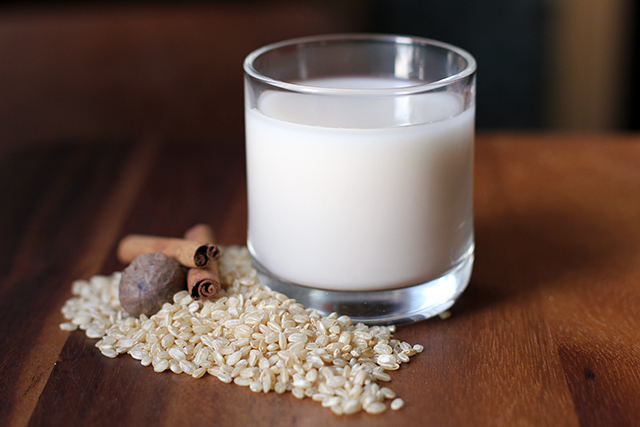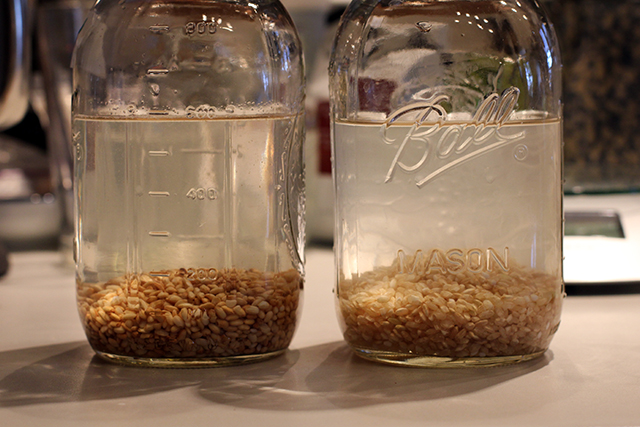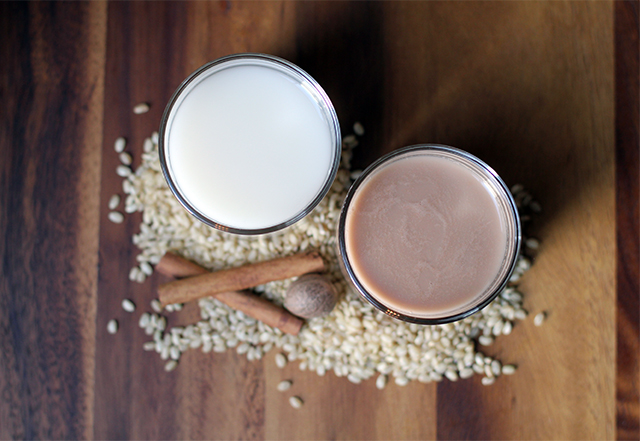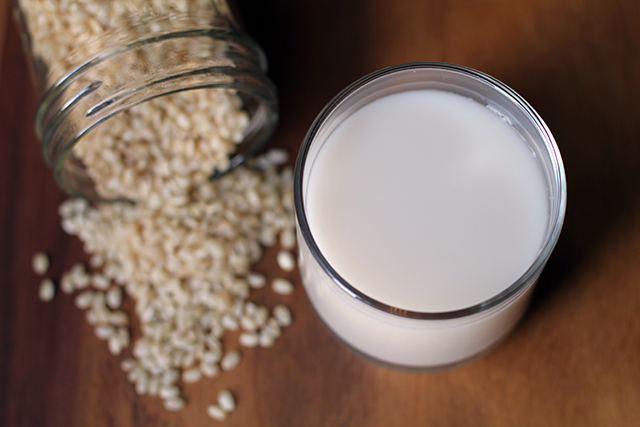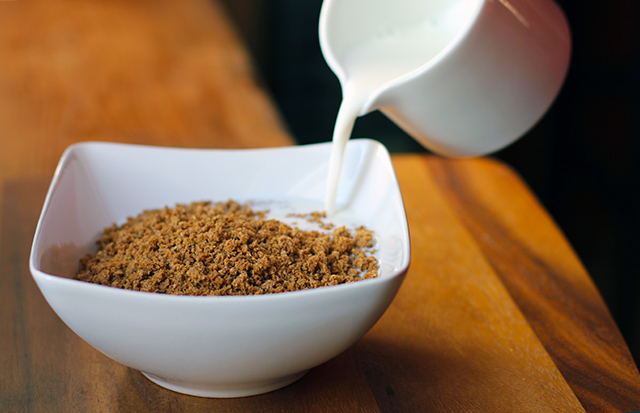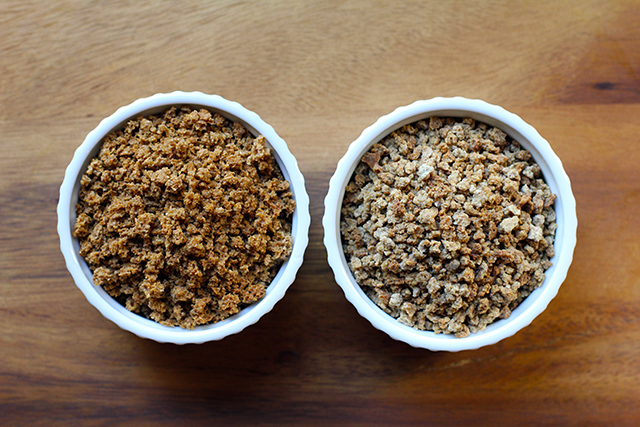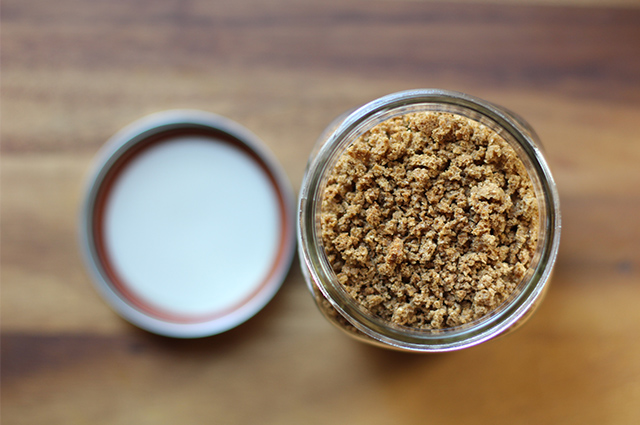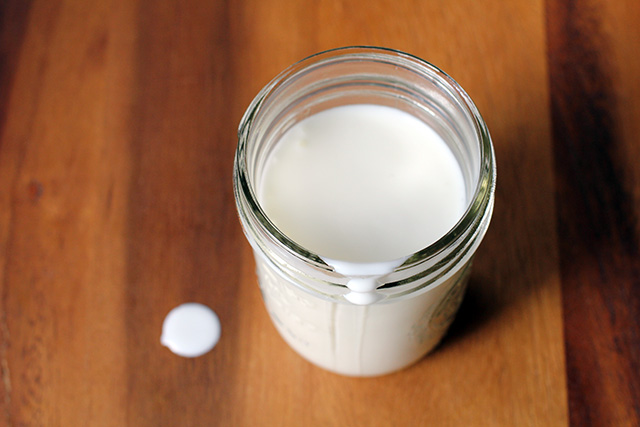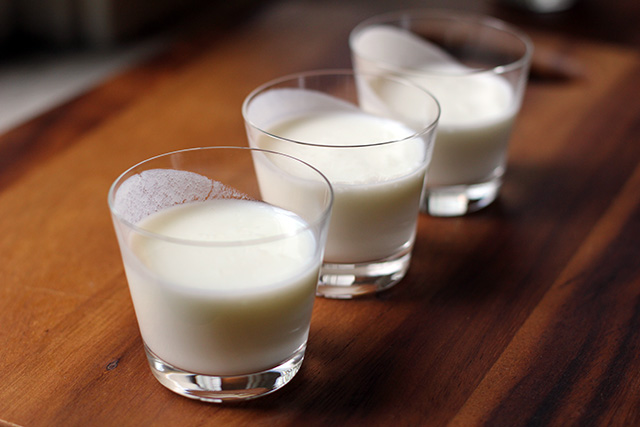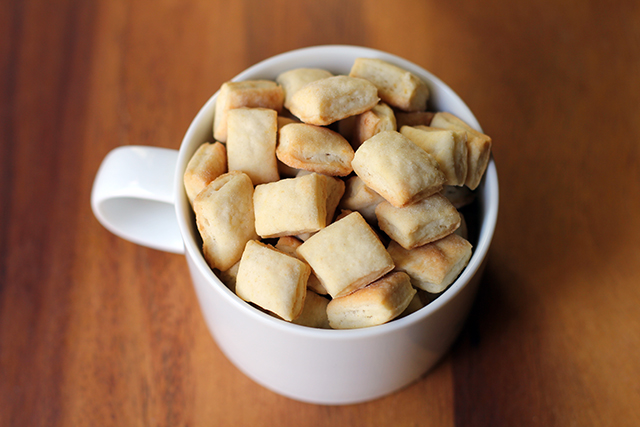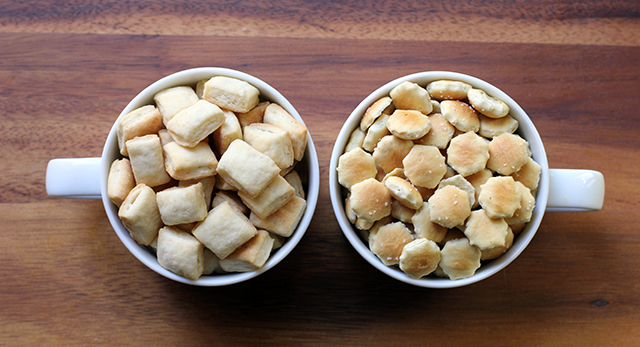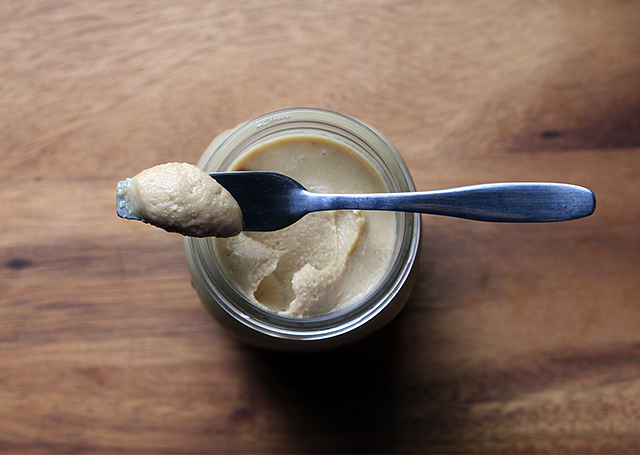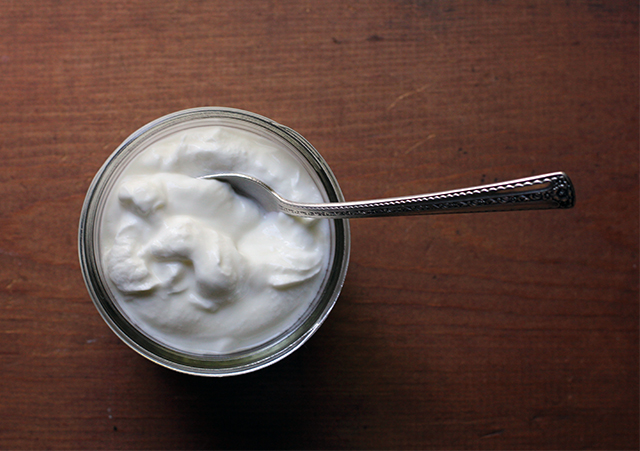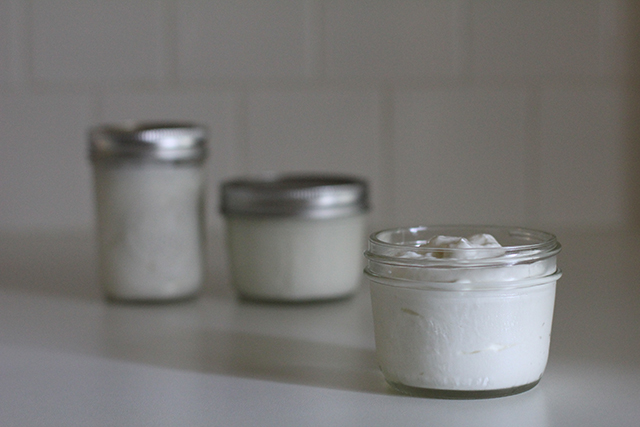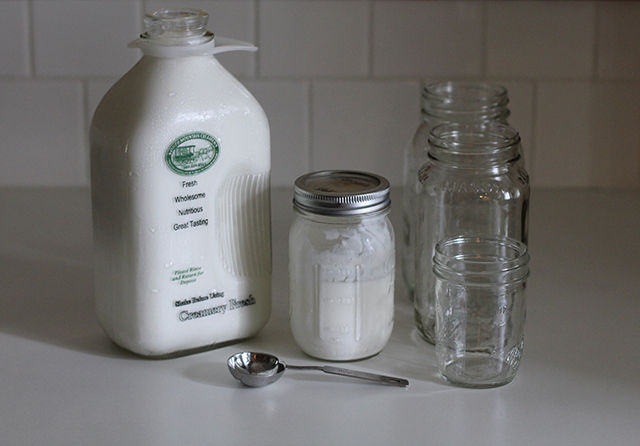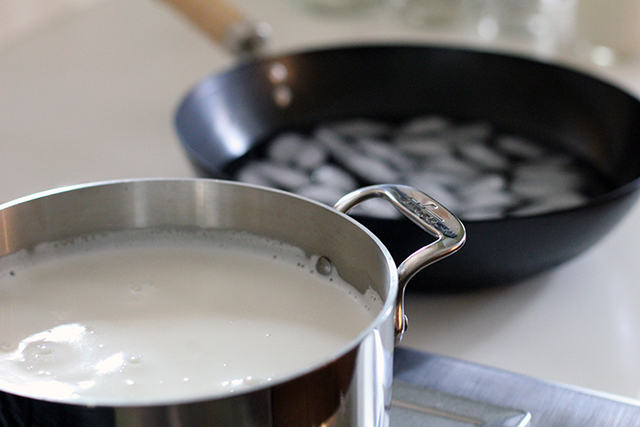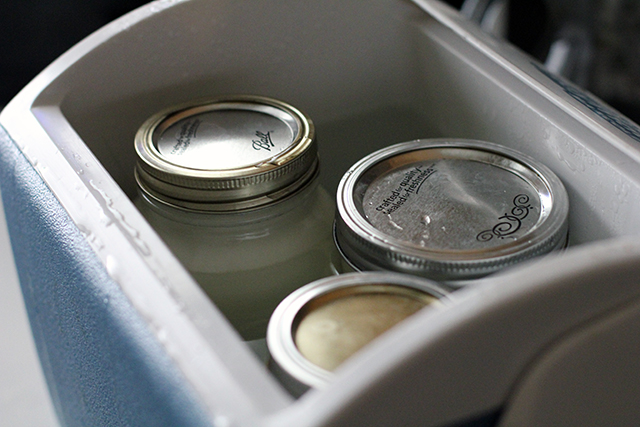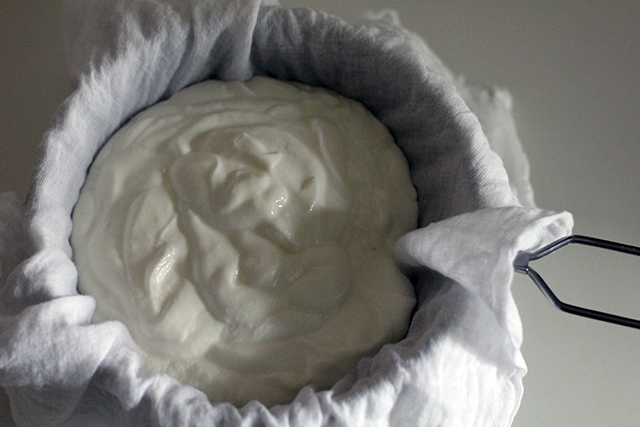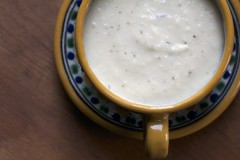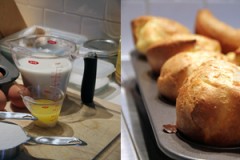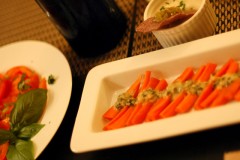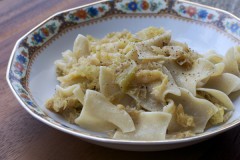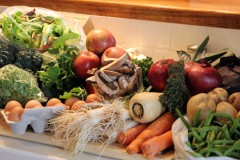When my DIY column over at Serious Eats was still just an idea, my soon-to-be editor encouraged me to go exploring. Sure, homemade soups and baked goods are generally tastier than their store-bought cousins, but what about the stuff it might not occur to many home cooks to make from scratch? As a result, I now find myself wandering the aisles of my local grocery store and pausing to wonder: Hey, could I make that?
Obviously, I’m not alone in this instinct: the internet is filled with inventive cooks trying to hack all kinds of products. Some are motivated by health issues, others by political or environmental concerns. Generally it’s a mashup of all of the above. I enjoy the process, so I make what I can and still buy (without guilt) what I don’t have the time, energy, or ability to produce. And while I can’t walk things all the way back to growing my own soybeans or pasturing a cow on my city lot, it’s been excitingly educational to see how far I can get. Case in point: after the post on DIY-ing Greek yogurt, I had a reader request a non-dairy version of the same treat. I thought I’d get to work on that one this week, but once I started thinking about how I would approach it, I decided I might as well begin by making some non-dairy milks. (Also, I just got a real blender that needed to earn its counter space.)
Of all the many milk alternatives out there, I don’t think I’ll be using rice milk to make yogurt, but this does seem like the one with the most financial bang for the DIY effort. Here’s what I learned:
Soaked vs Leftover vs Over Cooked: If my internet research can be trusted, the most popular way to make rice milk at home seems to be to boil the grains into oblivion with many times the amount of water you would normally use. I’m the odd woman out here because I found this milk to have an unpleasant mouth feel, gummy and almost slimy, even when diluted to match the consistency of the commercial version. (I used a plain version of Rice Dream as my control.) I also tried cooking a 1/2-cup of rice traditionally and then blitzing that in the blender with cold water and straining. That was closer to what I was going for, but still not quite it.
However, uncooked grains soaked overnight and then blended and strained (as if I was making a batch of horchata) got things very close—much lighter and brighter on the tongue. There was something a bit “raw” about the taste that bothered me just slightly, and this version of the milk separated more easily (quickly corrected with a firm shake), but soaking seemed the best method for getting a thin, drinkable “milk” similar to what’s sold in the Tetra Pak at the store. The thicker versions might make for better baking applications (I’ll have to test that down the line), but I wouldn’t want to sip them or pour them on my cereal.
Brown vs White: I tried both kinds of rice and felt a strong preference for brown rice. There was something rounder and more complex about the flavor it brought to the milk.
Toasting: As I mentioned above, I didn’t like using the overcooked rice, but there was still something off about the raw rice to my palate. I found that a quick toasting (left, above) in a dry skillet hit the happiest medium.
Sweeteners and Flavorings: Commercial rice milk does include oil, which some have suggested adds a creamier mouth feel. I was not a fan, particularly due to the tendency of the homemade milk to easily separate. However, some sweetener and/or flavoring seems needed if it’s going to be used as a beverage. Honey is good, but I like a couple teaspoons of maple syrup even more. White sugar results in a sweetness that’s the closest to the commercial variety. And no matter which you choose, a half teaspoon of vanilla extract is a lovely addition as well.
Do you have a favorite method that I missed or a special flavoring combination? Any tips or tricks you’d recommend?
The Verdict
Brown rice at my local grocery is selling for 99¢ for one pound, which will make the equivalent of about two and a half 32-ounce boxes of commercial rice milk (retailing for $2.49 each), so—depending on what else you like to add—the economic savings seem obvious. The operation also takes very little active time or effort. When all is said and done, the real question is probably one of taste. While similar to the commercial options, this DIY recipe is not an exact replica of what’s on grocery store shelves. This homemade version tastes more like, well, rice. If you’re looking for a cost-saving option that you are free to flavor to suit your own preferences, however, this is a great way to go.
DIY Rice Milk
Makes two cups (easily multiplied to match volume needs)
1/2 cup brown rice
2 cups water
Honey, maple syrup, white sugar, or other sweetener to taste (optional)
1/4 teaspoon vanilla extract (optional)
pinch salt
In a dry skillet over medium heat, toast rice grains until fragrant and coloring, stirring regularly, about four minutes. Transfer to a bowl or jar and add 2 cups water. Set aside to soak ten hours.
When soaking in complete, pour rice and water into blender pitcher, add any additional sweeteners and flavorings, and blend at highest setting until rice grains are no longer visible, about 2 minutes.
Using a nut milk bag or similarly fine strainer, drip milk into a clean glass storage jar. Chill rice milk thoroughly before serving. Shake well before each use.
Variations: Add a bit of cocoa powder or cinnamon or nutmeg to the rice and water before blending.
This recipe and post were created for my “DIY vs. Buy” column on Serious Eats.

